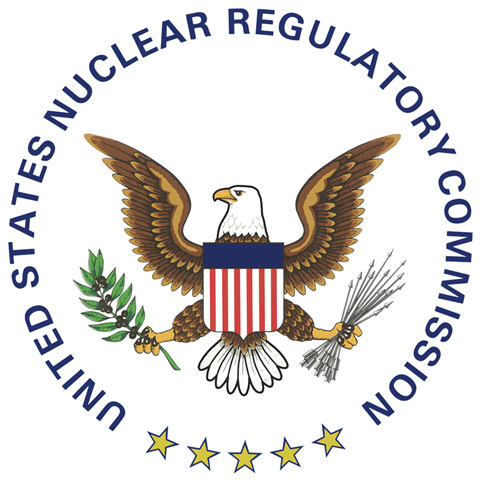We make use of cookies. When you click on agreed you are giving us your permission to do so. Please read our cookie statement for more information.
Long-Term Operation of Nuclear Power Plants in the US with Subsequent License Renewal
Long-Term Operation of Nuclear Power Plants in the US with Subsequent License Renewal
27 October 2021
In the United States, it was recognized in the early 1980s that the topic of extending the operating licenses for nuclear power plants would need to be addressed. This prompted activities at the NRC to consider a process for renewing licenses, research activities to demonstrate the feasibility of renewing licenses, and codes and standards activities. Based on the results of these activities, a technical review group concluded that many aging phenomena are readily manageable and do not pose technical issues that would preclude life extension.
In 1990, the NRC issued a proposed license renewal rule for public comment that addressed the safety and technical requirements for a 20-year license renewal. The NRC adopted these regulations (Title 10 of the Code of Federal Regulations (10 CFR) Part 54, “Requirements for Renewal of Operating Licenses for Nuclear Power Plants”) in 1991.
US Nuclear Regulatory Commission Office Nuclear Reactor Regulation, Division of New and New Renewed Licenses
Allen Hiser
Senior Technical Advisor for License Renewal Ageing Management
NRC found that many aging effects are adequately managed by existing programs during the initial license period[1]. NRC subsequently amended the regulations, in May 1995, to establish a regulatory process that is more efficient, stable, and predictable than the previous license renewal rule. Part 54 was clarified to focus on managing the adverse effects of aging, especially the effects of aging on long-lived passive structures and components and time-limited aging analyses (TLAAs) as described in 10 CFR 54.21(a)(1) and 54.3. This 1995 version of the rule is largely unchanged today.
With the first license renewal application submitted in April 1998, the implementation of license renewal became a reality in the United States. In August 1999 the NRC staff was directed by the Commission to develop improved guidance documents to focus the staff’s review on areas where existing programs should be augmented, including where new programs were needed. This activity led to the development of the Generic Aging Lessons Learned (GALL) Report (NUREG-1801) and the Standard Review Plan for License Renewal (SRP-LR, NUREG-1800) in 2001. Both documents have been updated two times, with the Revision 2 documents published in 2010. Since then, ten intermediate changes have been made, in the form of License Renewal Interim Staff Guidance (LR-ISG) documents, which result in official changes to the GALL report and the SRP-LR.
[1] NUREG-1412, Foundation for the Adequacy of the Licensing Basis: A Supplement to the Statement of Considerations for the Rule on Nuclear Power Plant License Renewal (10 CFR Part 54), December 1991 (NRC ADAMS Accession No. ML080310668).

With license renewal well underway, the concept of a subsequent license renewal (SLR), to authorize plant operation to 80 years, emerged in the 2008-2009 timeframe. A Commission decision in 2014 stated that the process described in Part 54 was adequate for SLR. The staff then used the Revision 2 version of the GALL report and SRP-LR, along with later LR-ISGs, additional lessons learned from application reviews, plant operating experience, and the results of an expert elicitation process to develop new documents for SLR, entitled GALL-SLR (NUREG-2191) and SRP-SLR (NUREG-2192). These documents were published in 2017. In addition, a document to provide the technical basis for the information provided in the GALL‑SLR report and the SRP-SLR has been issued (NUREG-2221). Documentation of the staff’s resolution of public comments on the draft documents is provided in NUREG-2222.
The Commission decision in 2014 on the adequacy of the Part 54 process for SLR also identified four technical issues that require resolution for SLR: reactor pressure vessel – neutron embrittlement (e.g., trends for high fluence levels and surveillance programs); reactor vessel internals - high fluence effects (e.g., irradiation-assisted stress corrosion cracking, loss of fracture toughness and void swelling); concrete and containment performance (long-term radiation and high temperature exposure, and alkali-silica reaction); and electrical cables (environmental qualification and in-service testing of cables). While these topics have been addressed in a plant-specific basis in SLR applications, generic resolutions require the completion of on-going research. The review of the initial SLR applications have identified the need for changes to the guidance, resulting in issuance of four SLR-ISGs, with several more in the preparation stage. In addition, several technical challenges have arisen in the initial SLR application reviews, related to aging management of neutron embrittlement of steel reactor pressure vessel supports, PWR reactor vessel internal components, and buried piping fabricated from gray cast iron.
As of October 2021, renewed licenses for operation to 60 years have been issued for 94 reactors, with nine of these reactors subsequently ceasing operation. With 93 currently operating units, 6 reactors have renewed licenses for 80 years of operation and 79 have licenses for 60 years of operation. Of the remaining 8 reactors, 4 have plans to submit a license renewal application, 2 have plans to cease operation by 2025, and 2 units have not announced plans regarding license renewal.
